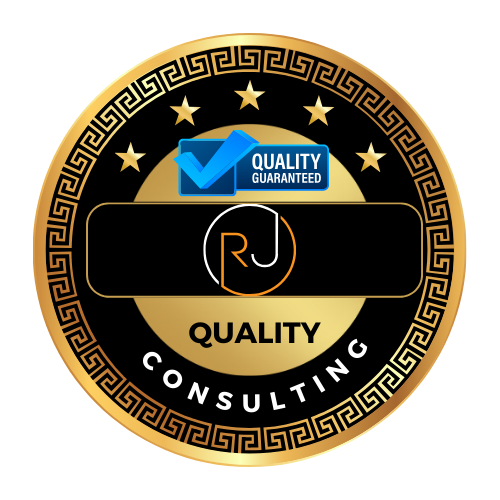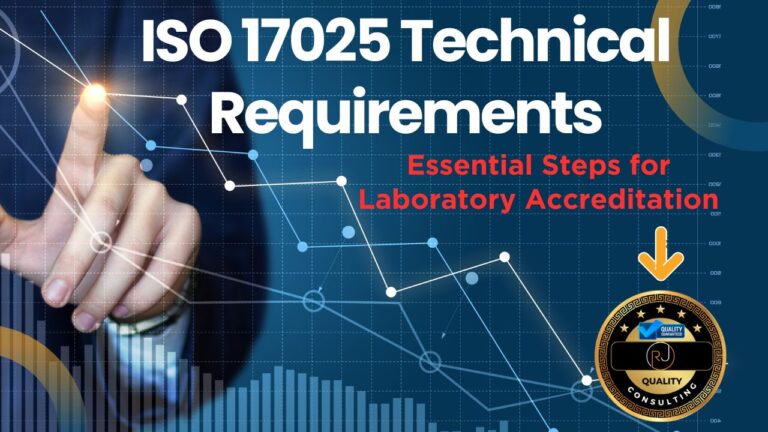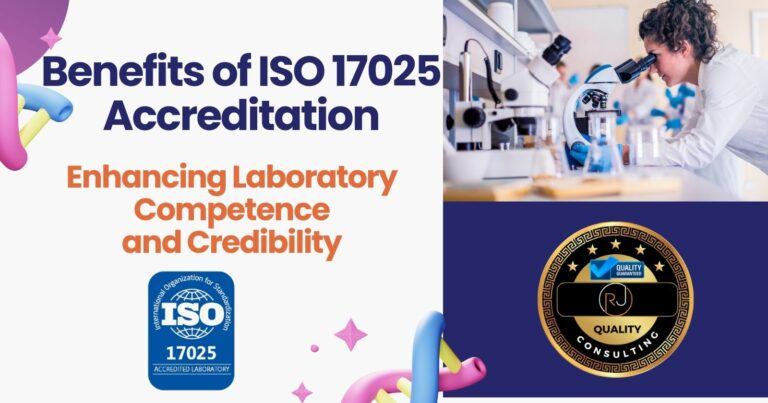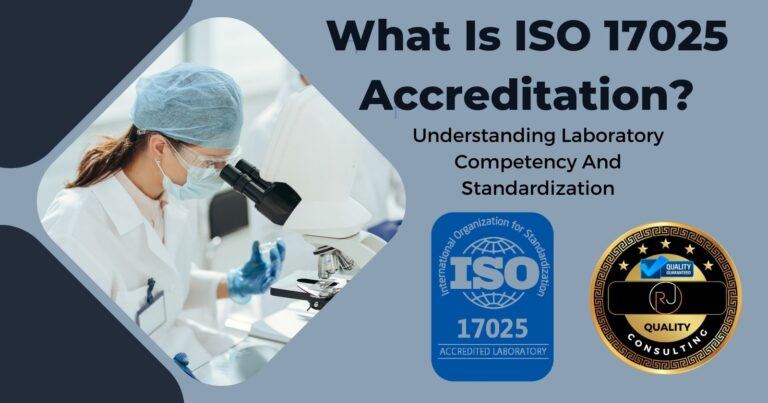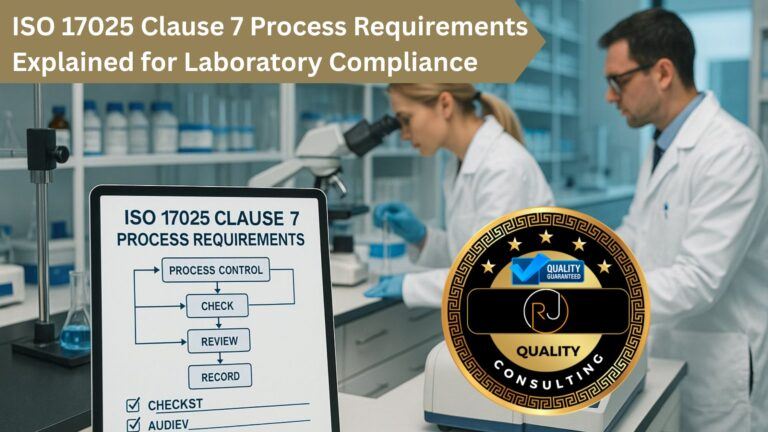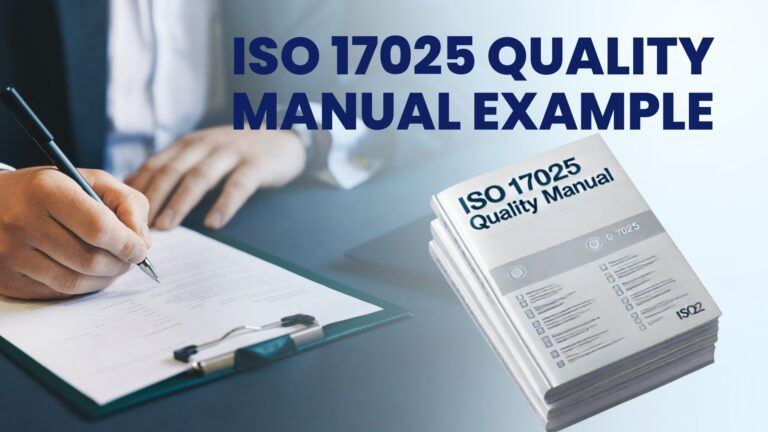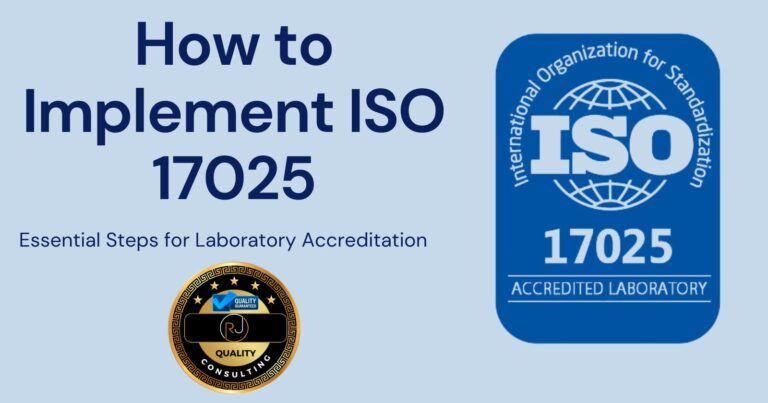ISO 17025 Clause 5 Structural Requirements Explained for Testing & Calibration Labs
Testing and calibration labs need more than just technical skills to earn trust—they also have to follow clear rules for how they’re set up and managed. ISO 17025 Clause 5 lays out important structural requirements that help labs prove they’re reliable, legally recognized, and well-organized. Meeting these requirements isn’t just about accurate test results; it shows customers and regulators the lab takes quality seriously.
📌 For a complete overview of every ISO 17025 clause, check out our guide 👉 ISO 17025 Clauses Explained
🎥 Clause 5 – Structural Requirements
Understanding your lab’s structure is crucial for demonstrating impartiality and authority under ISO 17025 Clause 5. This video explains how to design an organizational framework that supports accreditation readiness:
📘 ISO/IEC 17025 Quality Manual Template
Accelerate your lab’s accreditation process with our comprehensive Quality Manual Template, designed to align with ISO/IEC 17025:2017 standards.
- Fully editable and customizable to fit your laboratory’s needs.
- Includes all necessary procedures, forms, and policies.
- Structured to facilitate easy implementation and compliance.
- Developed by experts with extensive ISO/IEC 17025 experience.
Clause 5 is more than just an organization chart. It touches on the lab’s legal status, who handles what, and how authority and resources flow inside the lab. If you really get these rules and put them into practice, you can give your lab an edge—especially when it’s time for accreditation or audits.
Key Takeaways
- Clause 5 spells out how a lab should be structured and managed.
- Clear roles and documented responsibilities are at the heart of compliance.
- Following Clause 5 helps labs build trust and meet industry standards.
What Are Structural Requirements In ISO 17025?
Structural requirements in ISO 17025:2017 set the foundation for how testing and calibration labs organize themselves. These rules spell out the lab’s legal status and its responsibilities.
A laboratory needs to operate as a legal entity or as part of one that’s responsible for its activities. Public labs—think government-run—usually meet this through their official status.
Having a solid organizational structure matters for every lab. That means clear roles, responsibilities, and authority for everyone involved in testing, calibration, or management. Labs need an organization chart and paperwork that shows their structure backs up their management system.
ISO/IEC 17025 wants labs to name who’s responsible for key duties, like quality management and technical operations. There’s got to be a way to identify and manage personnel across all lab activities.
Following these requirements helps labs meet customer, regulatory, and accreditation body expectations. If you stick to ISO 17025 clauses, you’re showing exactly how you keep control over your work and deliver reliable results.
A summary table for structural requirements:
| Aspect | Key Details |
|---|---|
| Legal Status | Must be a legal entity |
| Organizational Structure | Roles and authority defined |
| Personnel Identification | Key responsibilities assigned |
| Documentation | Organization chart required |
Testing and calibration labs need to stick to these rules to qualify for and keep their ISO 17025 accreditation.
ISO 17025 Clause 5 Subclauses Breakdown with Practical Interpretation

ISO 17025 Clause 5 covers how a laboratory is structured: its legal status, management roles, reporting order, and how responsibilities get communicated. Understanding each subclause keeps labs compliant, efficient, and trustworthy.
5.1 – Legal Identity And Responsibility
A laboratory needs to be a legal entity or a specific part of one. That means being officially recognized and legally accountable for its activities.
This removes any doubt about who’s on the hook for the lab’s work—testing, calibration, all of it. The lab might be part of a company, university, or government, but its scope and authority should be spelled out.
Labs should keep documentation, like business registration or official designations, to prove legal status. For government labs, legal identity usually comes from existing laws or regulations.
If there’s no clear legal status, customers and regulators might question the validity of results, and the lab could run into legal headaches.
5.2 – Management Responsibility
Management directly handles the operation and impartiality of the lab. They make sure the lab meets technical requirements and delivers trustworthy test and calibration results.
They also need to shield the lab from commercial, financial, or other pressures that could mess with work quality. Management sets the direction and creates policies that support quality and competence.
Having clear management responsibility really matters for handling complaints, keeping accurate records, and avoiding conflicts of interest. Leadership isn’t just about titles—it’s about showing up and making decisions every day.
5.3 – Structural Safeguards
Structural safeguards keep the lab’s work honest and objective. Labs need policies and procedures that block outside influence or internal conflicts from messing with results.
Some practical examples:
- Keeping sales and lab operations separate
- Arranging for independent review of test results when possible
- Procedures for reporting pressure or misconduct
Labs should set boundaries so that all calibration and testing within the scope of accreditation gets done with scientific independence. Management needs to watch over these controls and check they’re followed.
5.4 – Organization Chart And Reporting Lines
Every lab should have an up-to-date organization chart that shows roles, lines of authority, and how people and departments connect.
A typical chart might look like this:
| Position | Reports To | Key Responsibilities |
|---|---|---|
| Laboratory Manager | General Manager | Overall lab operations |
| Quality Manager | Laboratory Manager | QA, audits, document control |
| Technical Staff | Laboratory Manager | Test and calibration work |
Clear reporting lines help staff know where to go for decisions and how information moves around. Documenting this structure supports accountability and helps solve problems faster.
5.5 – Communicating Roles And Responsibilities
The lab needs to make sure everyone knows their own roles and responsibilities.
They can do this with job descriptions, procedure manuals, staff meetings, and training sessions. Every staff member should know their tasks and how they fit into the bigger picture of delivering high-quality results within the lab’s scope of accreditation.
Written instructions and regular updates help avoid confusion, mistakes, and overlapping duties. Open communication keeps everyone on the same page and makes sure technical requirements and quality policies are met.
Here’s a quick table with the core points to ISO 17025 Clause 5
| Topic | Quick Point |
|---|---|
| Legal Entity | Lab must be a defined, responsible organization |
| Impartiality | Clear structure helps avoid conflicts of interest |
| Documentation | Structures and responsibilities must be recorded |
If you’re a visual learner, this table breaks down the tricky terms and shows what Clause 5 means in real lab situations. It covers practical steps in language that’s easy to follow.
Resources And Documents You’ll Need
Testing and calibration labs working with ISO 17025 Clause 5 need to prepare and keep several types of documents and resources.
Key Documents:
- Organizational Structure Chart: Shows reporting relationships and responsibilities.
- Legal Entity Proof: Confirms the lab’s legal status.
- Roles and Responsibilities: Lists who does what in the lab, especially for management and staff.
- Job Descriptions: Explains duties and required qualifications.
- Management System Manual: Describes how quality management is handled.
Accurate records back up reliable and valid results. This includes test records, calibration certificates, and training logs.
Data Management matters too. Labs need policies for handling, storing, and securing all data—digital or paper.
Here’s a table showing which documents help meet different Clause 5 obligations:
| Requirement | Example Document |
|---|---|
| Legal Status | Registration Certificate |
| Organizational Chart | Structure Diagram |
| Staff Competence | Training Records |
| Internal Audit | Audit Reports |
| Quality Management | Policy & Procedures Manual |
Labs need procedures for internal audits to check compliance and spot improvements. They should document audit plans, reports, and any follow-up actions.
Keeping these resources up to date helps labs stay compliant and deliver trustworthy results.
Common Audit Findings Related To Clause 5
Auditors often spot gaps in how labs define their organizational structure. Sometimes the structure’s just outdated, or nobody’s bothered to document it clearly. That always creates confusion during audits and can mess with compliance.
Plenty of labs skip regular gap analyses to check if their structure still fits ISO 17025. When labs don’t review these things, changes in staff or process just slip through the cracks.
Another thing that pops up: unclear roles and responsibilities for management and technical folks. Auditors find job descriptions missing or left to gather dust. This really ties into process requirements—when roles aren’t clear, work slows down or mistakes creep in.
Sometimes nobody’s named for key parts of the management system. If no one’s clearly in charge, it’s tough to prove the lab meets management requirements.
Labs also sometimes forget to document compliance with regulatory requirements. Missing or half-finished records can mean non-conformities during audits.
Here’s a quick list of typical findings:
| Finding | Impact |
|---|---|
| Missing or unclear organization chart | Confusion on lab roles |
| No regular gap analysis | Unnoticed problems |
| Undefined responsibilities | Weak management oversight |
| Incomplete compliance records | Failed regulatory audit checks |
Free Support & Next Steps
If you’re just starting to tackle ISO 17025 Clause 5, you’ll probably have questions about legal status, management structure, or how to handle documentation. Good news: a bunch of organizations actually offer free support resources for these early stages.
Where to Find Support:
- ISO and accrediting bodies post guidance on their websites.
- Industry consultants sometimes share answer sheets or webinars for free.
- Professional forums and online groups are great for trading questions and answers with peers.
Getting help can be as simple as joining a group, searching YouTube, or grabbing sample docs. Honestly, it’s smart to make a checklist of tasks using whatever templates you can find before jumping in.
Next Steps:
- Review and document your lab’s legal status.
- Map out the management structure—just a simple chart or table works.
- List key responsibilities and authorities for each position, and keep it clear.
| Task | Resource Type | Where to Get It |
|---|---|---|
| Legal entity checklist | Template | Consulting websites |
| Management chart example | Downloadable chart | Accreditor’s portal |
| Discussion with experts | Online forum | Professional networks |
Frequently Asked Questions
ISO 17025 Clause 5 gets into how a lab should be set up, how roles are defined, and what management and staff are supposed to do. It covers legal status, organization, authority, and exactly how responsibilities get handled so you don’t end up with chaos instead of compliance.
What are the key organizational structural requirements stipulated by ISO 17025 Clause 5 for laboratories?
ISO 17025 Clause 5 says a laboratory needs to be a legal entity or at least a defined part of one, and it’s got to be legally on the hook for its work. The lab should have a documented structure that lays out how different roles and functions fit together. Good documentation keeps people from arguing about who’s supposed to do what.
How does ISO 17025 Clause 5 define responsibilities and authorities within testing and calibration labs?
Each person’s responsibilities, authorities, and relationships need to be clear and on paper. Everyone should know what their job is and who they answer to. There’s got to be someone in charge of making decisions about lab operations and the management system, or things fall apart fast.
In the context of ISO 17025 Clause 5, how is the management structure of a laboratory outlined?
The clause expects the management structure to support both the management system and lab activities. The organization chart or other records should show clear lines of authority and communication. Assign key management roles and make sure people know who does what.
What guidance does ISO 17025 provide regarding lab personnel in Clause 5?
Labs need enough qualified people to get the job done. Staff have to have the right skills, training, and know-how. The lab should keep records to prove each person’s qualifications and job descriptions—no shortcuts here.
How should laboratories handle subcontracting according to ISO 17025 Clause 5 structural requirements?
If a lab subcontracts any testing or calibration work, it still needs to make sure those results meet ISO 17025 requirements. The lab stays responsible for the quality of all work, even when someone else does part of it. No passing the buck.
What does ISO 17025 Clause 5 say about the involvement of management in maintaining the integrity of operational processes?
Management needs to make sure the lab’s structure protects impartiality and avoids conflicts of interest. They support the management system, assign qualified staff, and keep documentation in order. If management keeps an eye on things and reviews regularly, processes and results are way more likely to stay solid.
Conclusion
Clause 5 of ISO 17025 lays out what a laboratory’s structure should look like. The standard wants the lab to be a legal entity—or at least a defined part of one—so there’s no confusion about who’s responsible for what.
Labs need an organizational structure that actually makes sense. Everyone should know their role, and the lab should document this clearly. You can’t just wing it and hope people figure things out. For further guidance on how laboratory structure and impartiality are evaluated during assessments, refer to the ILAC policy resources on laboratory accreditation.
Key points include:
- Labs need to identify who’s responsible for what.
- The organizational chart can’t just gather dust; it has to stay current.
- Clear lines of authority help keep things running smoothly and make accountability real.
If you get the structure right, you’re building a solid base for reliable testing and calibration. It’s not just paperwork—it actually matters.
Keeping these requirements documented and up to date helps labs avoid trouble and builds trust with clients and stakeholders. Honestly, it’s not just about ticking boxes. A well-structured lab gets better results and earns a stronger reputation in the long run.
Also explore:
- ISO 17025 Clauses Explained
- ISO 17025 Clause 4 General Requirements
- ISO 17025 Clause 6 Resource Requirements
- ISO 17025 Clause 6 and 7 Technical and non-technical requirements
- ISO 17025 Clause 7 Process Requirements
🕒 Book Your Free 45-Minute Consultation
Have questions about ISO/IEC 17025 or ISO 9001 implementation or accreditation? Schedule a free 45-minute consultation with me to discuss your Company or laboratory’s needs and how we can achieve compliance together.
Schedule Your Consultation